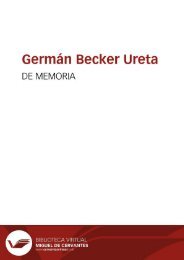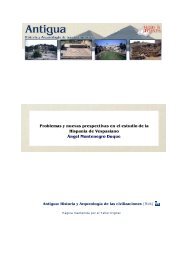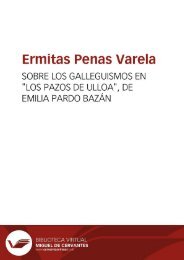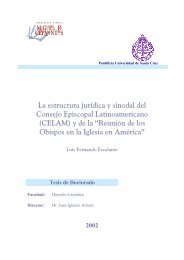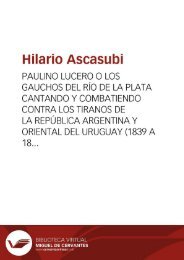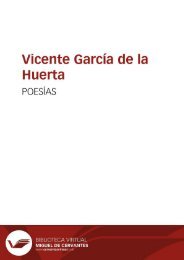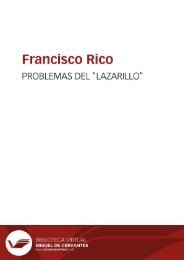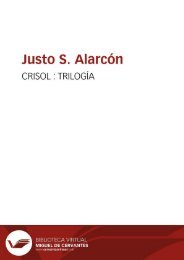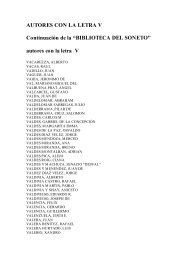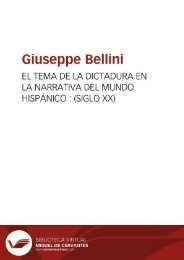Create successful ePaper yourself
Turn your PDF publications into a flip-book with our unique Google optimized e-Paper software.
Anales galdosianos [Publicaciones periódicas]. Año XII, 1977<br />
sabemos más que los metafísicos » (XLVIII, 298, 300). When at the end he says: « He dado mi<br />
fruto y estoy de más » (L, 307), he is signaling not only the realization of his own fictionality, but<br />
Irene's and Manolo's and his acceptance of their autonomous status.<br />
Why does Máximo lose control over Manolo and Irene? In accordance with life's patterns, although<br />
they owe their existence to the thinker-teacher-writer-artist Máximo, they, not he, determine their<br />
actions as they embrace the society in which they dwell. In the light of fiction, once created, they too<br />
become texts that others read and recreate. Their ultimate identity depends on these readers' recreation<br />
of them. Art is as relative to the beholder as reality is, and since the creator's perspective is no more<br />
than the perspective of yet another beholder, the creation's flight from its creator's particular perception<br />
of it is built into the creative act. Perhaps it lies in the nature of art that the artist, unable to sense the<br />
texture of his creations and powerless to track their future, simply programs their autonomy.<br />
Máximo Manso's eruption into the novel, his death, and his education/idealization of Manuel Peña<br />
and Irene are the three principal phases of <strong>Galdós</strong>' structuring of the theme of fictionality in El amigo<br />
Manso . To complete the picture, one must mention that the book brims over with direct and oblique<br />
references to the literary art. On the one hand, the frequent touches which signal that a writer is writing<br />
expand the work's self-referential dimension as art, fiction, and novel. On the other hand, specific<br />
literary styles and practices come under mischievous scrutiny.<br />
From the beginning <strong>Galdós</strong> pokes fun at the artistic process, but with the double irony that informs<br />
the whole novel. That is to say, the ironic tone that subverts the object presented in this light is itself<br />
subverted by the measure of seriousness with which it must be read. Consequently, when Manso<br />
writes: « soy un ejemplar nuevo de estas falsificaciones del hombre que desde que el mundo es<br />
mundo andan por ahí vendidas en tabla por aquellos que yo llamo holgazanes, faltando a todo deber<br />
filial, y que el bondadoso vulgo denomina artistas, poetas o cosa así » (I, 1-2), derision and exaltation<br />
are indistinguishable. If he is disrespectful of his progenitor, he does not disown him, for he declares<br />
himself openly as an artist (XIV, 84); and playful as the self-revelation is, it is nonetheless a revelation.<br />
The mysteries of the nature of fiction are outlined in Chapter XL, aptly entitled « Mentira, mentira<br />
» 141 -to wit, fiction. It begins with the sentence, « Dígolo porque ahora trae mi narración unas cosas<br />
tan estupendas que no las va a creer nadie » (XL, 247), and goes on to establish the following series<br />
of paradoxical facts: 1) this is a narration, my narration (fiction); 2) fiction is unbelievable; 3) fiction<br />
is truth attractively garbed; 4) truth is unbelievable; 5) I, the creator, am confused by my creation.<br />
141 <strong>Galdós</strong>' quaint use of chapter titles in this novel is a game that requires separate attention.<br />
103



